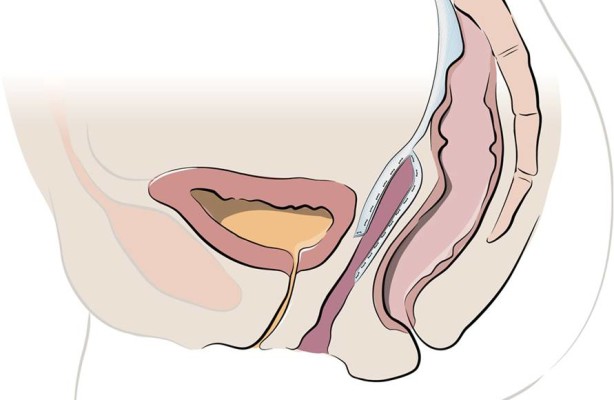Vaginal prolapse is a term that describes any of several issues that result in the walls of the vagina being moved out of the normal position. Prolapse can include the bladder, rectum, intestines, uterus, or even the top of the vagina (vaginal vault). When this prolapse has passed the vaginal opening (introitus), it is often necessary to restore the structure surgically. The ultimate decision for surgery, of course, will be made between yourself and a medical professional after a thorough physical exam and, possibly, some other specialized testing.
The surgery to repair vaginal prolapse is known as sacrocolpopexy. Traditionally, the surgery has been performed as an open surgery through an incision from just below the belly button (umbilicus) down to the top of the hip bone in front. After that, a mesh is used to connect the vagina tightly to the lowest part of the spine, the sacrum. This mesh heals in and keeps the vagina in the proper placement. This often involved long recovery times and post-surgical pain due to the extent of the incision.
If you are a candidate for sacrocolpopexy, you may also be a candidate for a minimally-invasive procedure using the assistance of a surgical robot. The surgical robot used by Tooele Urology is a system that allows for improved vision and mobility while maintaining a minimally-invasive approach to surgery. This is allows the surgeon to manipulate the usual surgical tools with the same accuracy as he would if the abdomen were open while maintaining the closed, minimally-invasive approach of laparoscopy (or operating using a camera instead of opening the belly completely).
A robotic sacrocolpopexy will give similar results to an open approach with some additional potential benefits comparatively:
- Equal surgical outcomes
- Faster recovery times
- Minimal scarring from smaller incisions
- Shorter hospital times
- Decreased risk for blood transfusions
- Less blood loss
- Less risk of infection
- Less post-surgical pain
The individual results of surgery will vary from patient to patient. As with all surgical procedures, there are no guarantees of benefits or outcomes.

